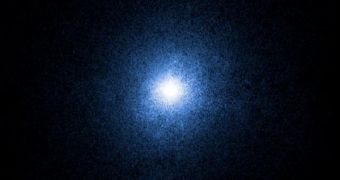Black holes are relatively new additions to astronomy, having been first discovered less than half a century ago. The first one, Cygnus X-1, was found exactly 45 years ago, but it wasn't until ten years later that its true nature was finally revealed. Because they had nothing to compare it with, astronomers believed that it was a very bright star, which made it famous. Everyone with a dedicated telescope turned it to the brightest source of X-rays known at the time and analyzed it. Even to this day, the black hole remains one of the Universe's “landmarks,” along structures such as the Helix Nebula and the Pillars of Creation, a stellar nursery.
Cygnus X-1 first secured its rightful place in the history books 35 years ago, when a combined optical and X-ray study determined its true nature and characteristics. Since then, its traits have been applied to a number of other so-called stars, which have later turned out to be a medium of supermassive black holes. What makes the first black hole more interesting than others, and somewhat unique for that matter, is the fact that it is a binary system, but not made up of two black holes. Rather, orbiting the massive, ten-Sun-mass formation is an even larger, blue, supergiant star, with a mass 20 times that of our Sun.
This star is also the main reason why Cygnus X-1 is such a powerful X-ray source. Stellar winds coming in from the blue star are focused by the black hole and forced into a spiral that eventually passes the formation's event horizon. The radiation is then converted into X-rays and emitted from the black hole's poles in powerful jets that reach millions of light-years away from their source. Even after all these years, the Chandra Space Telescopes, one of NASA's Great Observatory series, and the European Space Agency's (ESA) XMM-Newton are still observing Cygnus X-1, ScienceDaily reports.
More than a thousand studies have been published on the object, proving that it is still one of the most popular destinations to watch on the sky. Astronomers are even to this day observing it constantly, trying to understand the nature of black holes, as well as their influence on their “environments.” Additional research is focused on determining the composition of the stellar winds that fall into it, as well as the spin of the formation itself. The most recent measurements show that it spins very slowly by cosmic standards, which hints at the fact that it was formed from a peculiar type of supernova.

 14 DAY TRIAL //
14 DAY TRIAL //